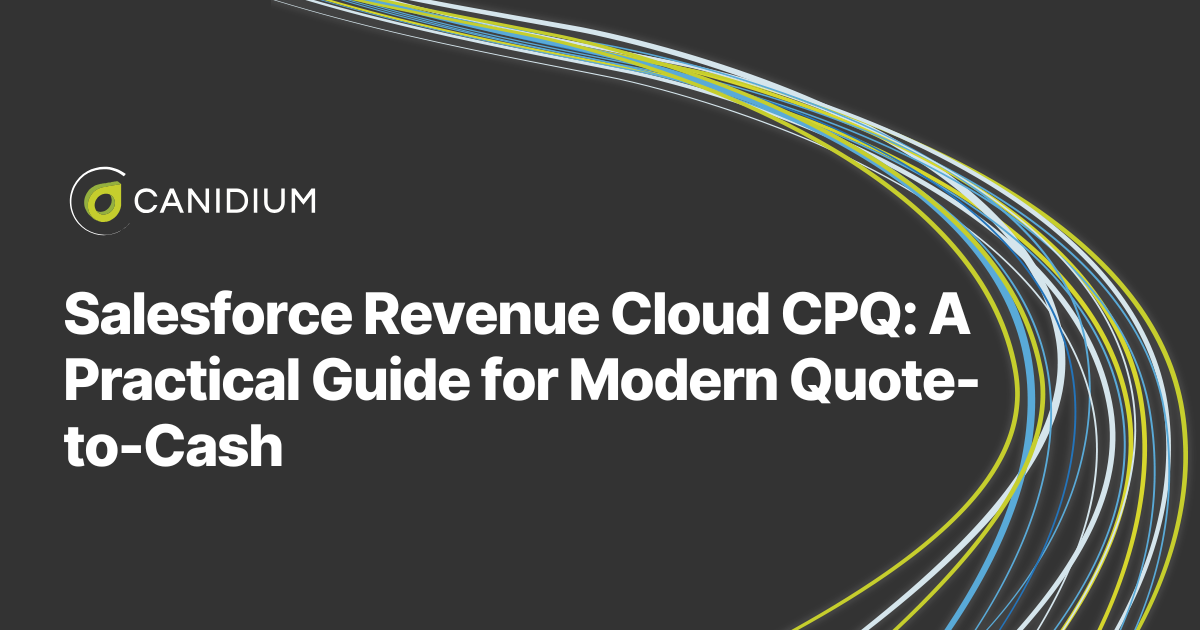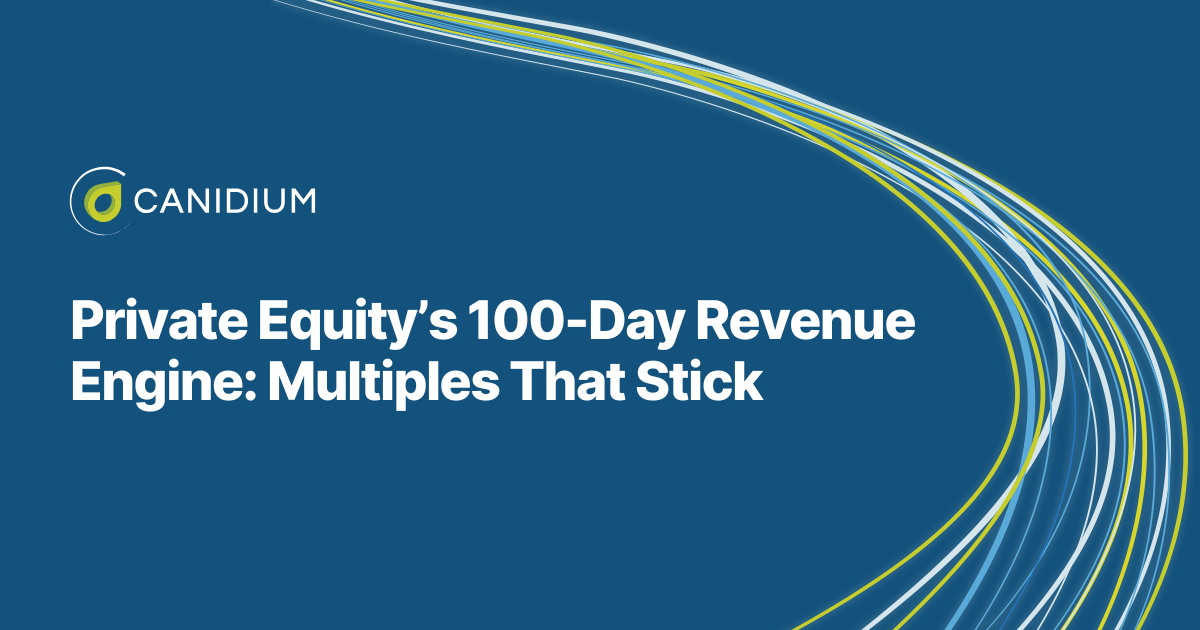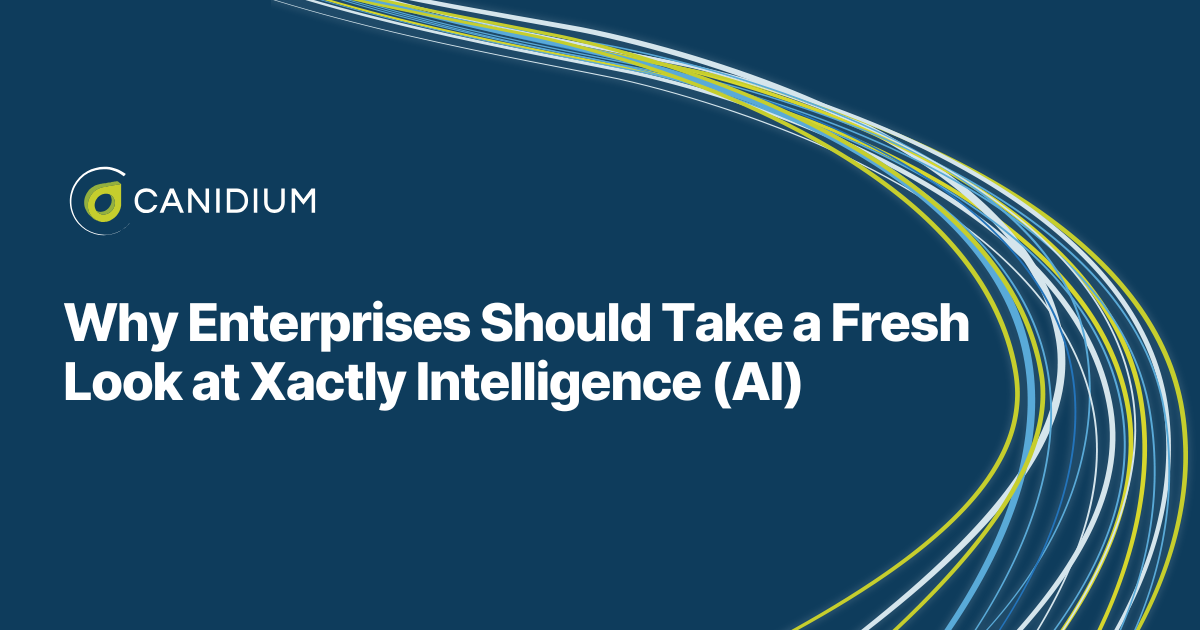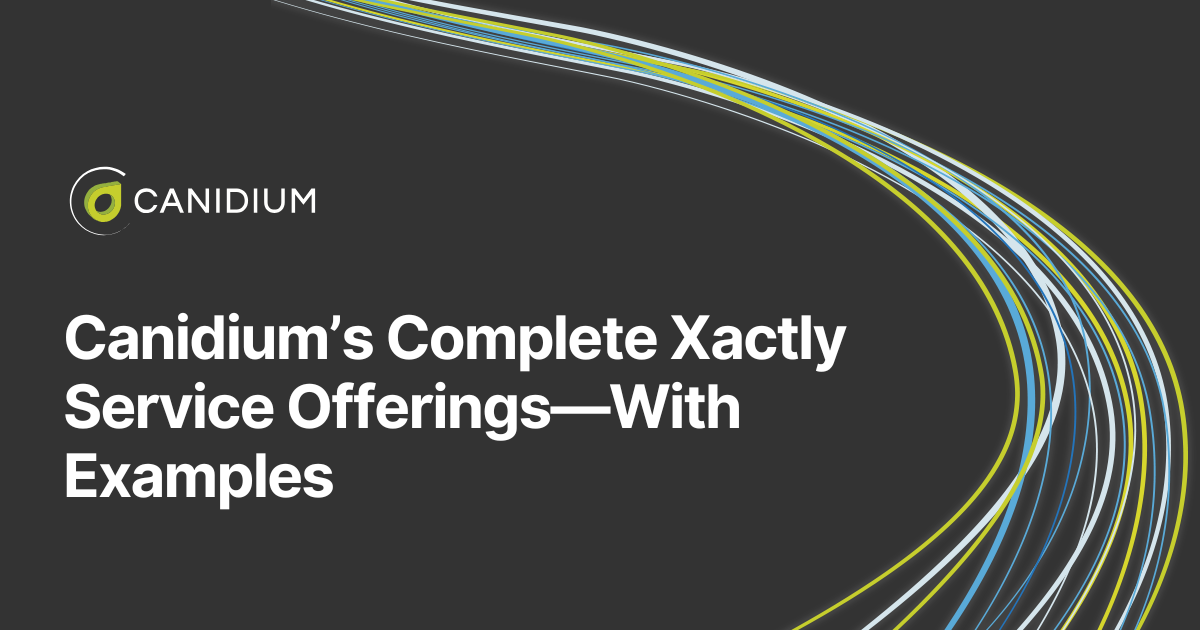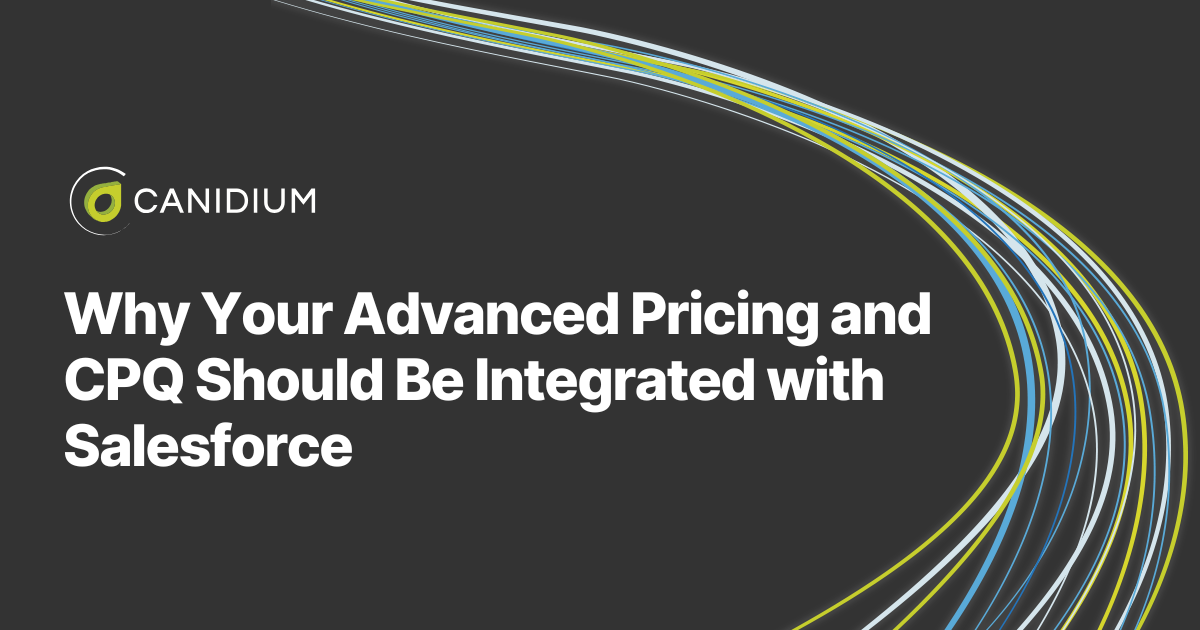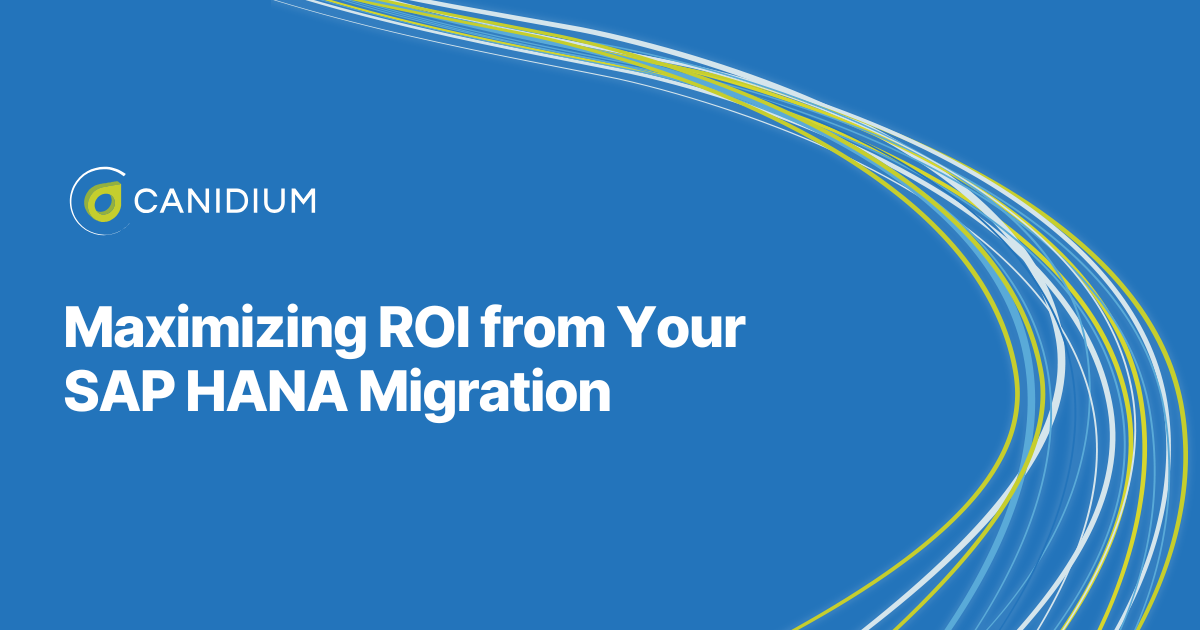If you’ve ever tried to push a complex deal through your sales cycle using spreadsheets and disconnected systems, you know how painful (and risky) the quote-to-cash process can be. The handoffs between configuration, pricing, quoting, contracting, and billing are where mistakes happen, revenue gets lost, and customer trust can erode. Salesforce Revenue Cloud exists to solve this problem.
By embedding Configure, Price, Quote (CPQ) capabilities directly into Salesforce, Revenue Cloud brings order, automation, and insight to the entire revenue lifecycle. In this guide, we’ll break down what Revenue Cloud CPQ actually is, how it’s evolving, the business value it delivers, and how you can implement it successfully with Canidium as your partner.
What “Revenue Cloud CPQ” actually means (and why it’s evolving)
At its core, CPQ helps sales teams generate accurate quotes quickly. Instead of juggling catalogs, pricing tiers, and approval emails, reps can rely on guided selling to configure complex products, apply the right discounts, and produce professional proposals in minutes.
But Salesforce has gone further with Revenue Cloud, an umbrella term that unifies CPQ with Billing, Subscription Management, and Revenue Lifecycle Management (RLM). The vision is bigger than quoting: it’s about controlling every step of the revenue process, from the first configuration choice to the last invoice payment, all inside Salesforce.
The key shift today is Salesforce’s move from its legacy, package-based CPQ stack toward on-core Revenue Lifecycle Management (RLM) and Revenue Cloud Advanced (RCA). These newer capabilities are designed to be API-first, data-driven, and powered by the Einstein platform. If you’re just starting out or considering a refresh, understanding this transition is critical to avoid locking yourself into legacy functionality that won’t be future-proof.
What CPQ does best today
Think of CPQ as your sales safety net. Instead of leaving reps to navigate a maze of options and policies, it enforces structure. Guided selling narrows choices to only valid, profitable combinations. Discount logic keeps margin erosion in check while still giving reps flexibility. Automated quote documents make proposals consistent and customer-ready.
For example, a manufacturer selling configurable equipment can set rules so a rep can’t accidentally quote a motor that doesn’t fit the selected frame. A software provider can use pricing guidance to suggest discounts based on past deals, ensuring every rep sells like the top 10% of the team. And because quotes flow seamlessly into orders, subscriptions, and billing within Revenue Cloud, finance teams no longer spend hours reconciling mismatched data.
The result? Faster quotes, fewer mistakes, and cleaner handoffs across your entire commercial operation.
Where Revenue Cloud is going (and why it matters)
Salesforce’s strategy is clear: monetization needs to live on the CRM core. That means no more juggling between disparate systems for quoting, contracting, and billing. Everything from subscription changes to renewals to entitlement management is being built natively on the platform.
The implications are huge. If your business model shifts—say from one-time sales to subscriptions or usage-based pricing—Revenue Cloud is designed to flex with you. AI will play a growing role here as well, from recommending bundle configurations to automating repetitive approval tasks through Salesforce’s emerging “agent” framework.
For leaders, this shift means fewer integration headaches and faster adaptability when your revenue model changes. For sales teams, it means less time wasted on admin and more time closing deals.
Business outcomes you should expect
When implemented well, CPQ delivers results that go far beyond operational efficiency:
- Speed: Reps generate first quotes in minutes, not days. That translates directly to faster close rates.
- Profitability: Discounting controls and pricing guidance protect margins without slowing deals.
- Governance: Quotes flow cleanly into contracts, orders, and invoices with audit trails intact, reducing compliance risk.
- Retention: Subscription management makes it easier to capture renewals and expansions without revenue leakage.
- Data quality: With all revenue activity inside Salesforce, you get a single source of truth for reporting and forecasting.
For executives, these outcomes are measurable in terms of revenue growth, margin improvements, and cost savings. For frontline teams, they mean less friction and more confidence in the tools they use every day.
How to scope your CPQ initiative (and avoid rework)
The temptation with CPQ is to jump straight into building product catalogs and rules. But the most successful programs start with strategy:
- Monetization first. Define the revenue models you use today and those you want to support tomorrow. CPQ should enable both.
- Clean product and pricing data. If your catalogs are messy, CPQ will magnify the pain. Use implementation as an opportunity to cleanse and standardize.
- Establish guardrails early. Document discount thresholds, approval workflows, and pricing policies before you design the system.
- Map quote-to-cash flows. Make sure everyone agrees on how quotes evolve into orders, invoices, and revenue recognition.
- Design with reps in mind. Guided selling should feel intuitive, not like a checklist. Build user paths that mirror your top sales motions.
- Plan for RLM/RCA. If you’re new to CPQ, don’t just replicate legacy processes—consider Salesforce’s strategic roadmap and future-proof your investment.
By scoping deliberately, you avoid costly rework and ensure your implementation supports business needs well into the future.
Implementation blueprint (what “good” looks like)
A phased approach is the safest way to succeed:
- Phase 0 — Readiness. Define strategy, cleanse data, and align stakeholders.
- Phase 1 — Foundation. Build the product catalog, rules, pricing logic, and quote templates.
- Phase 2 — Integration. Connect quotes to contracts, orders, and billing. Implement subscription and entitlement flows.
- Phase 3 — Intelligence. Layer in analytics, dashboards, and AI-driven pricing guidance.
- Phase 4 — Scale. Expand into new revenue models, partner channels, and advanced automation.
This blueprint ensures you capture early wins while building a scalable foundation for growth.
KPIs that prove it worked
How do you know CPQ is delivering ROI? Track these metrics:
- Time from quote request to customer-ready proposal
- Quote accuracy and error rates
- Approval turnaround time
- Average selling price versus list price
- Renewal rates for subscription products
- Invoice dispute frequency
- Sales adoption of guided selling paths
These indicators tie directly to revenue efficiency, margin health, and customer satisfaction.
Common pitfalls (and how to dodge them)
Even the best tools fail without the right approach. The most common mistakes include:
- Replicating ERP complexity inside CPQ instead of keeping sales processes lean.
- Skipping data cleanup leads to confusing catalogs and bad pricing rules.
- Trying to solve every sales motion on day one instead of focusing on the top 80%.
- Ignoring Salesforce’s shift toward on-core RLM risks investing in soon-to-be-sunset capabilities.
Avoiding these pitfalls requires discipline and a partner who understands both the technology and the business context.
When does Subscription Management matter?
Subscription Management is essential if your business depends on renewals, expansions, or usage-based pricing. It allows reps to handle mid-term changes, finance to manage billing adjustments, and customers to self-serve through portals, all while tying back to the same contract and account.
For subscription-heavy businesses, this isn’t a “nice-to-have.” It’s the backbone of predictable recurring revenue.
Why teams choose Canidium
At Canidium, we know that successful CPQ isn’t just about technology; it’s about alignment between pricing strategy, sales behavior, and operational execution.
- We bring cross-platform expertise in CPQ, pricing, and compensation to ensure your sales motions and incentives work in harmony.
- We help you define monetization architecture that balances what lives in Salesforce versus ERP or external systems.
- We build for sustainability, ensuring your admins can own and evolve the solution post-go-live.
- And if you’re wrestling with the legacy CPQ vs RLM question, we’ll help you evaluate the tradeoffs and chart a pragmatic path forward.
Quick buyer’s checklist
Before you move forward, ask yourself:
- Do we have a monetization roadmap, and does Salesforce CPQ/RLM support it?
- Are our discount policies defined and measurable?
- Is our product/pricing data clean enough to use in CPQ?
- Do we know how quotes will become orders, invoices, and revenue schedules?
- What’s our plan for RLM/RCA migration if we start on legacy CPQ?
If you can’t answer “yes” to these, that’s where to start.
Ready to explore your options?
Whether you’re launching CPQ for the first time, rationalizing years of custom rules, or evaluating a migration from legacy CPQ to Revenue Cloud RLM, Canidium can help. We’ve guided organizations of all sizes through the design, build, and adoption phases—and we know what it takes to unlock measurable ROI.
Let’s talk. No pressure, no sales pitch—just a conversation about your revenue strategy and where you want to go.


